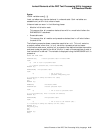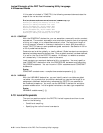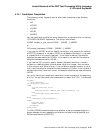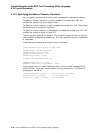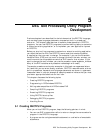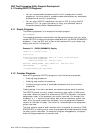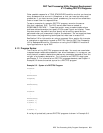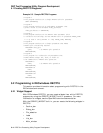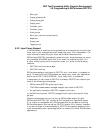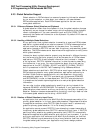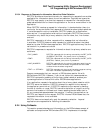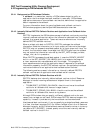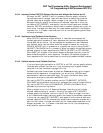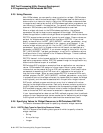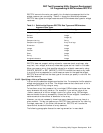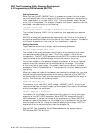DEC Text Processing Utility Program Development
5.2 Programming in DECwindows DECTPU
• Menu_bar
• Popup_attached_db
• Popup_dialog_box
• Popup_menu
• Pulldown_entry
• Pulldown_menu
• Push_button
• Scroll_bar (vertical and horizontal)
• Separator
• Simple_text
• Toggle_button
5.2.2 Input Focus Support
In DECwindows, at most one of the applications on the screen can have the input
focus; that is, only one application can accept user input from the keyboard. For
more information about the input focus, see the Motif documentation.
DECwindows DECTPU automatically grabs the input focus whenever you cause
an unmodified M1DOWN event (that is, an event not modified by Shift, Ctrl,
or other modifying key) while the pointer cursor is in either of the following
locations:
• DECTPU’s main window widget
• DECTPU’s title bar
DECwindows assigns input focus to DECTPU only if and when it is possible to
do so. To make sure that DECwindows can assign input focus, your application
should use the GET_INFO (SCREEN, ‘‘input_focus’’) built-in procedure.
If assignment of input focus to DECTPU is enabled, DECTPU can receive input
focus in the following circumstances:
• DECwindows DECTPU grabs input focus
• The DECwindows session manager assigns input focus to DECTPU
• An application layered on DECTPU requests input focus
In the Motif environment, DECTPU supports both implicit and explicit focus
policies.
Compaq recommends that you use only a DECwindows section file with
DECwindows DECTPU. (All versions of EVE shipped with OpenVMS Version
5.1 or higher are compatible with DECwindows and are suitable for building
DECwindows section files, as well as DECTPU Version 3.0 or higher.) However,
if you do not follow this recommendation, DECTPU’s automatic grabbing of the
input focus enables your layered application to interact with other DECwindows
applications.
DEC Text Processing Utility Program Development 5–5



